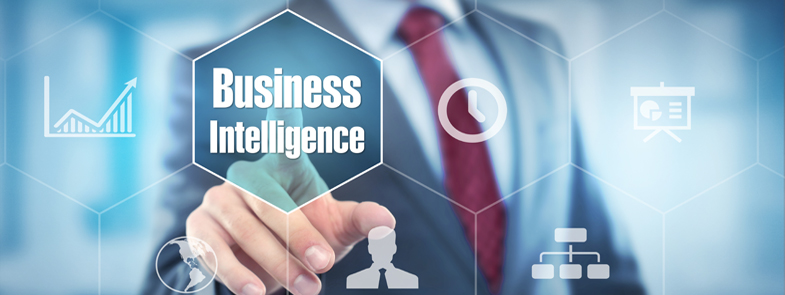Use these guidelines to develop sound data policies for your business
This article is excerpted from The Chief Data Officer Handbook for Data Governance.
Data governance is the formulation of policy to optimize, secure, and leverage information as an enterprise asset by aligning the objectives of multiple functions. By its very nature, data governance requires cross-departmental cooperation to deliver timely, trustworthy data for better decisions.
Many organizations have tried and failed to implement successful data governance programs. Having reviewed the characteristics of hundreds of data governance programs, we have developed five ingredients of a successful data governance program:
1. Strong business ownership with IT support. Successful data governance programs are owned by the business with strong IT support. Nascent data governance programs may start in IT, but they need to move into the business once they have achieved a level of maturity. Strong business ownership requires executive sponsorship around clearly defined business problems. For example, the chief risk officer in a bank may be the executive sponsor to improve the trustworthiness of data for Basel II compliance. The chief financial officer may also sponsor data governance to improve the quality of financial reporting.
It goes without saying that strong executive sponsorship will ensure the appropriate level of funding and staffing for the data governance program. IT is also an important ingredient of data governance success. Technology plays a critical role in the successful implementation of a data governance program.
2. Focus on critical data elements. Because it is impossible to successfully govern all the data across the enterprise, mature data governance programs must focus on critical data elements (CDEs). These are a handful of attributes that have a significant impact on regulatory reporting, operational performance, and business intelligence.
3. Emphasis on data artifacts. Successful data governance programs generate a number of valuable data artifacts. These data artifacts include business terms, business rules, code tables, policies, standards, processes, data quality scorecards, and data issues. Over time, successful data governance programs generate a rhythm associated with the production and approval of these artifacts at meetings of the data stewards and the data governance council.
4. Alignment around metrics and policy enforcement. As with any program, data governance must focus on metrics that are important to the business. These metrics may be “the number of critical data elements with end-to-end data lineage” or the data quality index. Successful data governance programs also introduce mechanisms to enforce data policies, standards, and processes. These mechanisms include data governance scorecards, escalations, and data audits.
5. Celebration of quick wins with alignment around the long-term roadmap. Successful data governance programs are able to point to quick wins within weeks of inception. These quick wins may be creation of a glossary for key business terms or a data quality report. However, these programs are also tied into a long-term roadmap over 12 to 18 months.
As you can imagine, it is not easy to implement data governance successfully. Many organizations have tried, and many have failed. Data governance councils often lack the clout to successfully align the different factions in an organization. The Chief Data Officer (CDO) is a recent innovation to create a strong executive focus on data governance.
Building a Successful Technology Foundation for Data Governance
A successful data governance program requires strategy, people, process, and technology. It is important for companies to think about these components in that specific order. Many organizations make the mistake of purchasing technology before they have fully defined the strategy, people, and process components of their data governance program. This usually results in problems because the requirements for the technology cannot be clear without first defining the direction of the data governance program.
Once an organization has its strategy, people, and process in place, a strong technology platform is critical to successful data governance programs because it can promote collaboration, boost productivity, and enable the repeatable processes that make up data governance. Four of the essential technology pillars of data governance include:
- Data quality management—This capability provides fit-for-purpose tools for IT and business (non-technical) users to discover, understand, and manage the quality of data. It also includes the ability to create scorecards to manage data quality on an ongoing basis, based on metrics defined by the business.
- Business definitions—A business glossary provides the ability for business users to provide business context to the data in terms of term names, definitions, owners, links to relevant documentation and policies, and relationships to other terms.
- Master data and reference data management—A good master data management system helps to discover, manage, and share core data about entities such as customers, part numbers, and partners that is common across applications. Central management of this essential data ensures that it is timely, up to date, and consistent across all the systems that use this data.
- Data flow visibility and change management—It is also essential for the organization to have easy visibility into the flow of data across systems. Users should be able to visualize where data comes from, how it is moved, how it is transformed, and where it is ultimately consumed. From an IT perspective, these data flows make it easy to understand and learn the environment and to avoid errors when making changes. From a business perspective, data flows can support regulatory compliance by showing, for example, where the data for a risk calculation came from and how the final risk numbers were produced.
Summary
Looking forward, the ultimate goal of data governance is to help the organization deliver business value faster and with greater accuracy. A strong technology platform that is adaptable to changes in the technology environment is essential to provide the agility required to meet the needs of the business.





























 More than ever, there is a demand for IT to deliver innovation. Your IBM i has been an essential part of your business operations for years. However, your organization may struggle to maintain the current system and implement new projects. The thousands of customers we've worked with and surveyed state that expectations regarding the digital footprint and vision of the company are not aligned with the current IT environment.
More than ever, there is a demand for IT to deliver innovation. Your IBM i has been an essential part of your business operations for years. However, your organization may struggle to maintain the current system and implement new projects. The thousands of customers we've worked with and surveyed state that expectations regarding the digital footprint and vision of the company are not aligned with the current IT environment. TRY the one package that solves all your document design and printing challenges on all your platforms. Produce bar code labels, electronic forms, ad hoc reports, and RFID tags – without programming! MarkMagic is the only document design and print solution that combines report writing, WYSIWYG label and forms design, and conditional printing in one integrated product. Make sure your data survives when catastrophe hits. Request your trial now! Request Now.
TRY the one package that solves all your document design and printing challenges on all your platforms. Produce bar code labels, electronic forms, ad hoc reports, and RFID tags – without programming! MarkMagic is the only document design and print solution that combines report writing, WYSIWYG label and forms design, and conditional printing in one integrated product. Make sure your data survives when catastrophe hits. Request your trial now! Request Now. Forms of ransomware has been around for over 30 years, and with more and more organizations suffering attacks each year, it continues to endure. What has made ransomware such a durable threat and what is the best way to combat it? In order to prevent ransomware, organizations must first understand how it works.
Forms of ransomware has been around for over 30 years, and with more and more organizations suffering attacks each year, it continues to endure. What has made ransomware such a durable threat and what is the best way to combat it? In order to prevent ransomware, organizations must first understand how it works. Disaster protection is vital to every business. Yet, it often consists of patched together procedures that are prone to error. From automatic backups to data encryption to media management, Robot automates the routine (yet often complex) tasks of iSeries backup and recovery, saving you time and money and making the process safer and more reliable. Automate your backups with the Robot Backup and Recovery Solution. Key features include:
Disaster protection is vital to every business. Yet, it often consists of patched together procedures that are prone to error. From automatic backups to data encryption to media management, Robot automates the routine (yet often complex) tasks of iSeries backup and recovery, saving you time and money and making the process safer and more reliable. Automate your backups with the Robot Backup and Recovery Solution. Key features include: Business users want new applications now. Market and regulatory pressures require faster application updates and delivery into production. Your IBM i developers may be approaching retirement, and you see no sure way to fill their positions with experienced developers. In addition, you may be caught between maintaining your existing applications and the uncertainty of moving to something new.
Business users want new applications now. Market and regulatory pressures require faster application updates and delivery into production. Your IBM i developers may be approaching retirement, and you see no sure way to fill their positions with experienced developers. In addition, you may be caught between maintaining your existing applications and the uncertainty of moving to something new. IT managers hoping to find new IBM i talent are discovering that the pool of experienced RPG programmers and operators or administrators with intimate knowledge of the operating system and the applications that run on it is small. This begs the question: How will you manage the platform that supports such a big part of your business? This guide offers strategies and software suggestions to help you plan IT staffing and resources and smooth the transition after your AS/400 talent retires. Read on to learn:
IT managers hoping to find new IBM i talent are discovering that the pool of experienced RPG programmers and operators or administrators with intimate knowledge of the operating system and the applications that run on it is small. This begs the question: How will you manage the platform that supports such a big part of your business? This guide offers strategies and software suggestions to help you plan IT staffing and resources and smooth the transition after your AS/400 talent retires. Read on to learn:
LATEST COMMENTS
MC Press Online